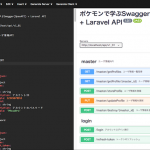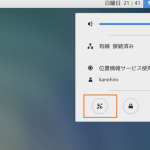# cd /etc/pki/tls/certs/
# /usr/bin/openssl req -utf8 -newkey rsa:1024 -keyout server.key -nodes -x509 -days 36500 -out ftp.crt -set_serial 0 Generating a 1024 bit RSA private key ..++++++ .........................++++++ writing new private key to 'server.key' ----- You are about to be asked to enter information that will be incorporated into your certificate request. What you are about to enter is what is called a Distinguished Name or a DN. There are quite a few fields but you can leave some blank For some fields there will be a default value, If you enter '.', the field will be left blank. ----- Country Name (2 letter code) [XX]:JP State or Province Name (full name) []:Tokyo Locality Name (eg, city) [Default City]:Nakano-ku Organization Name (eg, company) [Default Company Ltd]:Hoge Co., Ltd. Organizational Unit Name (eg, section) []:Management Department Common Name (eg, your name or your server's hostname) []:www.example.com Email Address []:postmaster@example.com
# cat server.key ftp.crt > ftp.pem # chmod 400 ftp.*
# yum install vsftpd
# systemctl start vsftpd # systemctl enable vsftpd
# vi /etc/vsftpd/vsftpd.conf # Example config file /etc/vsftpd/vsftpd.conf # # The default compiled in settings are fairly paranoid. This sample file # loosens things up a bit, to make the ftp daemon more usable. # Please see vsftpd.conf.5 for all compiled in defaults. # # READ THIS: This example file is NOT an exhaustive list of vsftpd options. # Please read the vsftpd.conf.5 manual page to get a full idea of vsftpd's # capabilities. # # Allow anonymous FTP? (Beware - allowed by default if you comment this out). anonymous_enable=YES # # Uncomment this to allow local users to log in. # When SELinux is enforcing check for SE bool ftp_home_dir local_enable=YES # # Uncomment this to enable any form of FTP write command. write_enable=YES # # Default umask for local users is 077. You may wish to change this to 022, # if your users expect that (022 is used by most other ftpd's) local_umask=022 # # Uncomment this to allow the anonymous FTP user to upload files. This only # has an effect if the above global write enable is activated. Also, you will # obviously need to create a directory writable by the FTP user. # When SELinux is enforcing check for SE bool allow_ftpd_anon_write, allow_ftpd_full_access #anon_upload_enable=YES # # Uncomment this if you want the anonymous FTP user to be able to create # new directories. #anon_mkdir_write_enable=YES # # Activate directory messages - messages given to remote users when they # go into a certain directory. dirmessage_enable=YES # # Activate logging of uploads/downloads. xferlog_enable=YES # # Make sure PORT transfer connections originate from port 20 (ftp-data). connect_from_port_20=YES # # If you want, you can arrange for uploaded anonymous files to be owned by # a different user. Note! Using "root" for uploaded files is not # recommended! #chown_uploads=YES #chown_username=whoever # # You may override where the log file goes if you like. The default is shown # below. #xferlog_file=/var/log/xferlog # # If you want, you can have your log file in standard ftpd xferlog format. # Note that the default log file location is /var/log/xferlog in this case. xferlog_std_format=YES # # You may change the default value for timing out an idle session. #idle_session_timeout=600 # # You may change the default value for timing out a data connection. #data_connection_timeout=120 # # It is recommended that you define on your system a unique user which the # ftp server can use as a totally isolated and unprivileged user. #nopriv_user=ftpsecure # # Enable this and the server will recognise asynchronous ABOR requests. Not # recommended for security (the code is non-trivial). Not enabling it, # however, may confuse older FTP clients. #async_abor_enable=YES # # By default the server will pretend to allow ASCII mode but in fact ignore # the request. Turn on the below options to have the server actually do ASCII # mangling on files when in ASCII mode. # Beware that on some FTP servers, ASCII support allows a denial of service # attack (DoS) via the command "SIZE /big/file" in ASCII mode. vsftpd # predicted this attack and has always been safe, reporting the size of the # raw file. # ASCII mangling is a horrible feature of the protocol. #ascii_upload_enable=YES #ascii_download_enable=YES # # You may fully customise the login banner string: #ftpd_banner=Welcome to blah FTP service. # # You may specify a file of disallowed anonymous e-mail addresses. Apparently # useful for combatting certain DoS attacks. #deny_email_enable=YES # (default follows) #banned_email_file=/etc/vsftpd/banned_emails # # You may specify an explicit list of local users to chroot() to their home # directory. If chroot_local_user is YES, then this list becomes a list of # users to NOT chroot(). # (Warning! chroot'ing can be very dangerous. If using chroot, make sure that # the user does not have write access to the top level directory within the # chroot) #chroot_local_user=YES #chroot_list_enable=YES # (default follows) #chroot_list_file=/etc/vsftpd/chroot_list # # You may activate the "-R" option to the builtin ls. This is disabled by # default to avoid remote users being able to cause excessive I/O on large # sites. However, some broken FTP clients such as "ncftp" and "mirror" assume # the presence of the "-R" option, so there is a strong case for enabling it. #ls_recurse_enable=YES # # When "listen" directive is enabled, vsftpd runs in standalone mode and # listens on IPv4 sockets. This directive cannot be used in conjunction # with the listen_ipv6 directive. listen=YES # # This directive enables listening on IPv6 sockets. By default, listening # on the IPv6 "any" address (::) will accept connections from both IPv6 # and IPv4 clients. It is not necessary to listen on *both* IPv4 and IPv6 # sockets. If you want that (perhaps because you want to listen on specific # addresses) then you must run two copies of vsftpd with two configuration # files. # Make sure, that one of the listen options is commented !! listen_ipv6=NO pam_service_name=vsftpd userlist_enable=YES tcp_wrappers=YES #匿名の接続を許可しない anonymous_enable=NO #アスキーファイルの送受信の許可(メモ帳で読めるファイル) ascii_upload_enable=YES ascii_download_enable=YES #バージョン情報の秘匿 ftpd_banner=Welcome to blah FTP service. #自分のユーザディレクトリより上層にいけなくする chroot_local_user=YES #通常ユーザとchrootユーザ設定。この場合chroot_listに書かれると上位にいける chroot_list_enable=NO chroot_list_file=/etc/vsftpd/chroot_list #ディレクトリごと削除できるようにする。 ls_recurse_enable=YES pam_service_name=vsftpd tcp_wrappers=YES #/etc/vsftpd/user_listのユーザーだけを許可。 userlist_deny=NO #設定を簡単にするためにPASVのポート範囲を限定。 pasv_min_port=50000 pasv_max_port=50030 #ユーザーの初期アクセスディレクトリ。(無効にしています、設定したい人は解除して下さい) #wwwで/home/ユーザー名/www #local_root=/var/www/vhosts/ #ユーザのホームディレクトリより上位のディレクトリへの移動を不許可に。 chroot_local_user=YES #.ファイルをアップ可能に force_dot_files=YES #ログの形式をvsftpd.logに、ログイン時の記録も取る。 xferlog_file=/var/log/vsftpd.log xferlog_std_format=NO log_ftp_protocol=YES #SSLを設定する場合(条件:証明書適用済み) ssl_enable=YES pasv_addr_resolve=YES #グローバルIPを指定する pasv_address=xxx.xxx.xxx.xxx ←●サーバIPを指定 rsa_cert_file=/etc/pki/tls/certs/ftp.pem require_ssl_reuse=NO force_local_logins_ssl=NO force_local_data_ssl=NO port_enable=YES allow_anon_ssl=NO #時刻設定 use_localtime=YES #refusing to run with writable anonymous root inside chroot()対策 ※7から allow_writeable_chroot=YES # ユーザコンフィグ user_config_dir=/etc/vsftpd/user_conf listen_port=xxx21←●サーバIPを指定
# /etc/vsftpd/user_list # vsftpd userlist # If userlist_deny=NO, only allow users in this file # If userlist_deny=YES (default), never allow users in this file, and # do not even prompt for a password. # Note that the default vsftpd pam config also checks /etc/vsftpd/ftpusers # for users that are denied. root bin daemon adm lp sync shutdown halt mail news uucp operator games nobody hogeuser ←接続ユーザ
空ファイル作成
# touch /etc/vsftpd/chroot_list
ログイン後のディレクトリを指定
# mkdir /etc/vsftpd/user_conf
# vi /etc/vsftpd/user_conf/hogeuser local_root=/var/www/
反映させる。
# systemctl reload vsftpd
FTPでログイン出来ないありがち
FTPを設定する機会は減少していてたまに依頼があると繋がらないってことがある。意外にはまるポイントがある。
はいはい、FTPでしょってちょちょいと考えていると、土壇場で焦る…!
- IPv4の許可, IPv6の禁止
listen=YES
listen_ipv6=NO - サーバIPの指定
pasv_address=xxx.xxx.xxx.xxx ←●サーバIPを指定
※ホスト名でも大丈夫っぽい? - ユーザコンフィグディレクトリ/ユーザ名ファイル
user_config_dir=/etc/vsftpd/user_conf
# vi /etc/vsftpd/user_conf/hogeuser local_root=/var/www/













